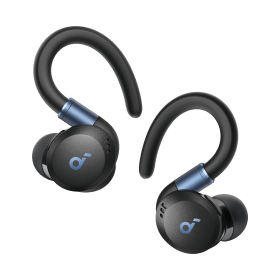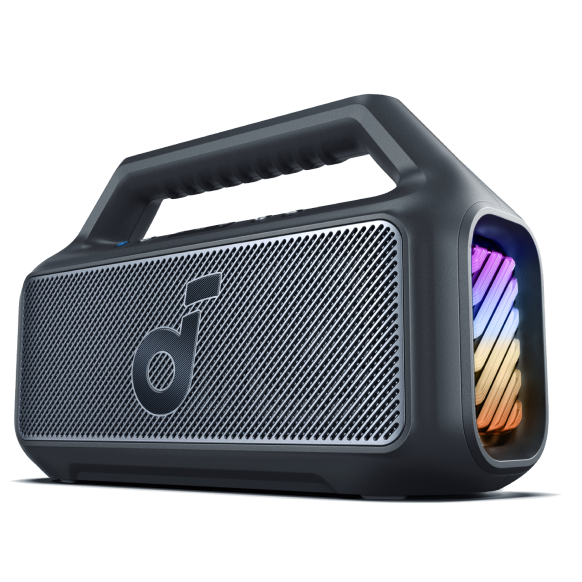Do Noise Cancelling Headphones Protect Hearing? A Complete Guide
In a world filled with constant noise, from bustling city streets to crowded airplanes, noise-cancelling headphones have become a popular accessory for those seeking solace in a quieter environment. But beyond offering a blissful escape from the cacophony of everyday life, many wonders: Does noise cancelling protect hearing? Are these earbuds bad for your ears? In this blog, we will delve into the science behind noise-cancelling headphones and explore the different types of noise cancelling headphones. We’ll also introduce effective ways to protect your hearing aside from noise cancelling headphones. So, let’s dive in!

How Does Noise Cancelling Work
There are two types of noise cancelling technology, active noise cancelling (ANC) and passive noise cancelling (PNC).
- Inside ANCheadphones, there are small microphones that capture the external noise. The captured sound is then analyzed by the built-in electronics, which generate an inverse sound wave with the same amplitude but opposite phase. When these two sound waves meet, they cancel each other out, effectively eliminating the unwanted noise.
- PNC, on the other hand, relies on the physical design and materials of the headphones themselves to block or minimize external noise, without the involvement of electronics. In other words, unlike ANC, PNC is done in a purely mechanical way.
Do Noise Cancelling Headphones Protect Hearing
Some may ask: Do noise cancelling headphones damage hearing? Does noise cancelling hurt ears? The answer is a straight no. On the contrary, noise cancelling headphones can actually provide some level of protection to your hearing. Below is an analysis of the cases of both ANC and PNC.
ANC: Active noise cancelling headphones work by using microphones to detect external noise and then generating an inverse sound wave to cancel it out. This can help reduce the need to increase the volume to drown out ambient noise, potentially lowering the risk of prolonged exposure to loud sounds. However, ANC technology is more effective at reducing low-frequency sounds, such as airplane engines or background hums, rather than sudden or high-pitched noises. So, do active noise cancelling headphones protect hearing? Yes, at least to some degree.
PNC: Passive noise cancelling headphones create a barrier between the ears and the surrounding environment, reducing the overall sound level. While PNC headphones may not provide the same level of noise reduction as ANC headphones, they can still offer some protection against harmful noise exposure. Moreover, PNC headphones tackle sudden outbursts of noise more effectively than ANC, which is more suitable for prolonged noise.
So, does noise cancelling protect hearing? It does. Both ANC and PNC can shield you from ambient noise more or less.

Types of Noise Cancelling Earbuds
After learning about the science behind noise cancelling earbuds, as well as studying questions like “Can headphones cause hearing loss”, it is time to get familiarized with different types of noise cancelling and ear protection headphones.
Active Noise Cancelling Earbuds
ANC earbuds reduce ambient noise by actively creating an inverse sound wave. Here are some of their common features.
Adjustable Noise Cancellation Levels: Many ANC earbuds, like the Liberty 4 Noise Cancelling Earbuds (viewed by some as the best hearing protection earbuds), offer adjustable levels of noise cancellation. This allows users to customize the amount of external sound they want to block, providing flexibility for different environments and personal preferences.
High-Quality Audio: ANC earbuds prioritize delivering high-quality audio performance. They may feature enhanced drivers, optimized audio profiles, and support for various audio codecs to ensure clear and immersive sound reproduction.
Bluetooth Connectivity: ANC earbuds commonly incorporate Bluetooth technology, allowing wireless connectivity to audio devices such as smartphones, tablets, or laptops. This wireless capability provides freedom of movement without being tethered by cords. The aforementioned Bluetooth hearing protection earbuds Liberty 4, for example, support Bluetooth 5.3 multi-point connection.
Passive Noise Cancelling Earbuds
Passive noise cancelling earbuds, or PNC earbuds, eliminates environmental noise by mechanical blocking. Typically, PNC headphones employ these features:
Closed-Back Design: PNC headphones typically feature a closed-back design, where the ear cups are completely sealed. This design helps to create a physical barrier that blocks out external noise and prevents sound leakage.
Over-Ear or On-Ear Styles: PNC headphones are available in both over-ear and on-ear styles. Over-ear headphones encompass the entire ear, providing a larger surface area for sound isolation. On-ear headphones rest on the outer ear, offering a more compact design while still providing some level of noise reduction.
Secure Fit: PNC headphones prioritize a secure and snug fit to maximize noise reduction. Some models feature adjustable headbands, swivel ear cups, or ear pads with memory foam that conform to the shape of the listener's head for added comfort and noise isolation.
Other Ways to Protect Your Hearing
While noise-cancelling headphones, both passive and active, can help protect your hearing, there are additional measures you can take to safeguard your auditory health as well as stop the earbuds from hurting your ears.
Limit Exposure to Loud Noise: Avoid prolonged exposure to excessively loud sounds, such as concerts, clubs, or machinery without adequate hearing protection.
Use Ear Protection: When engaging in activities that involve loud noises, such as concerts, shooting ranges, or power tool operation, wear proper ear protection. Earplugs or earmuffs can help reduce the volume of sound reaching your ears and protect against potential damage.
Keep Volume Levels in Check: When using headphones or earbuds, be mindful of the volume levels. As a general rule, use the 60/60 rule—listen at no more than 60% of the maximum volume for no more than 60 minutes at a time. Moreover, this sufficiently explains why noise cancelling works: it reduces the need to turn up the volume in noisy environments.

Conclusion
Do noise cancelling headphones protect hearing? As we have seen, noise cancelling headphones, both passive and active, can indeed provide some level of protection for our hearing. They offer a means to create a quieter listening environment, reducing the need to increase volume levels and potentially lowering the risk of prolonged exposure to loud sounds. However, to fully maintain hearing health, responsible usage, such as keeping volume levels in check and taking breaks, is also essential. In short, while noise cancelling headphones can contribute to protecting our hearing, they should be seen as a part of a comprehensive approach to auditory well-being.
FAQ
What Is ANC on Headphones?
ANC stands for Active Noise Cancelling, which is a technology used in headphones to reduce unwanted external noise. ANC headphones employ built-in microphones to capture ambient sounds, such as traffic or background chatter. Advanced algorithms then generate an inverse sound wave that cancels out these external noises. This counteracting sound is played through the headphones, effectively reducing the overall volume of outside disturbances.
What Decibel Is Best for Ear Protection
As a general guideline, sounds above 85 dB can be harmful if experienced for an extended period. In this case, measures of auditory protection are needed to safeguard against potential hearing loss, like wearing earmuffs or earplugs. If you're not sure that how loud your earbuds are, try to keep the volume no higher than 70% of the maximum volume of your headphones.














































